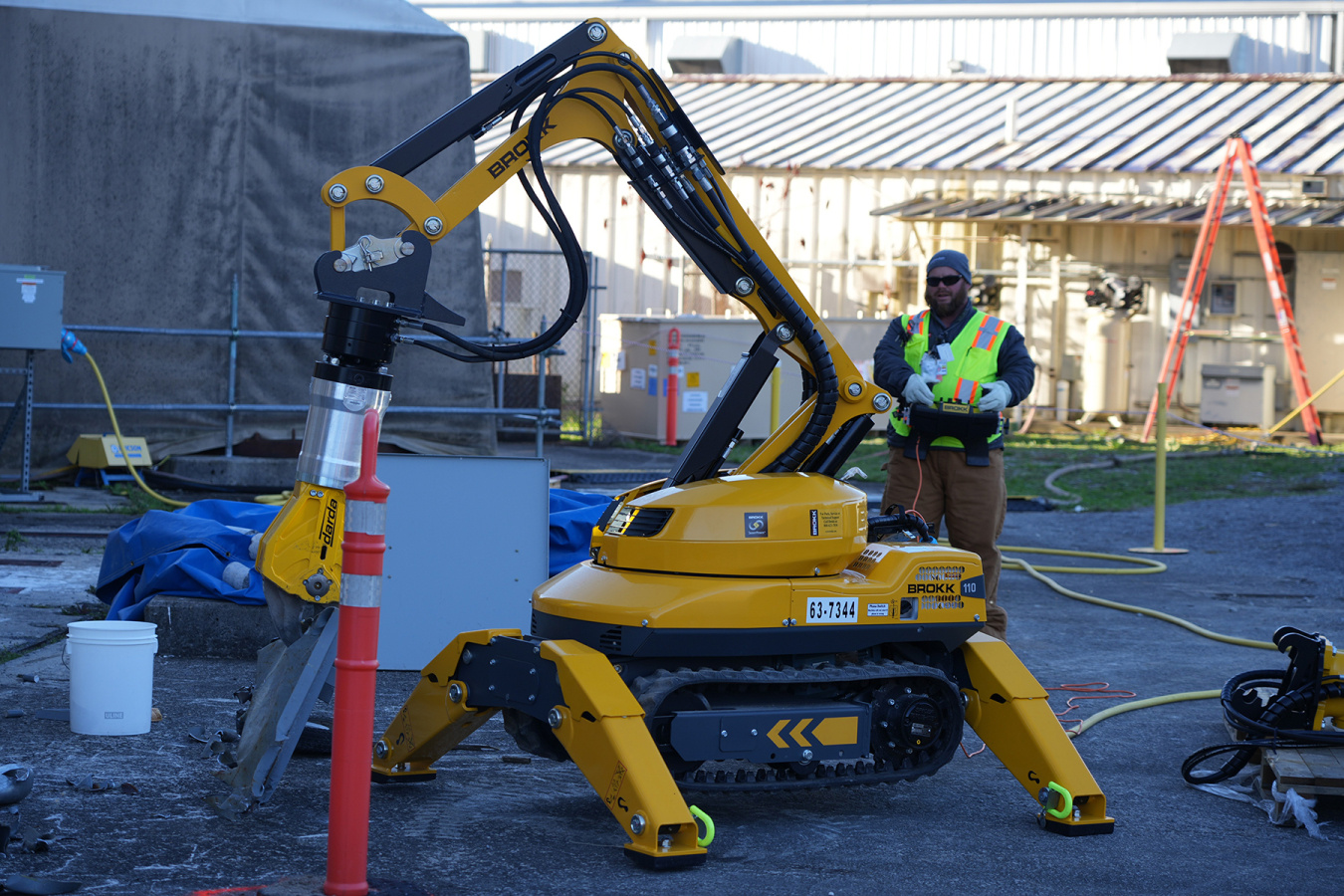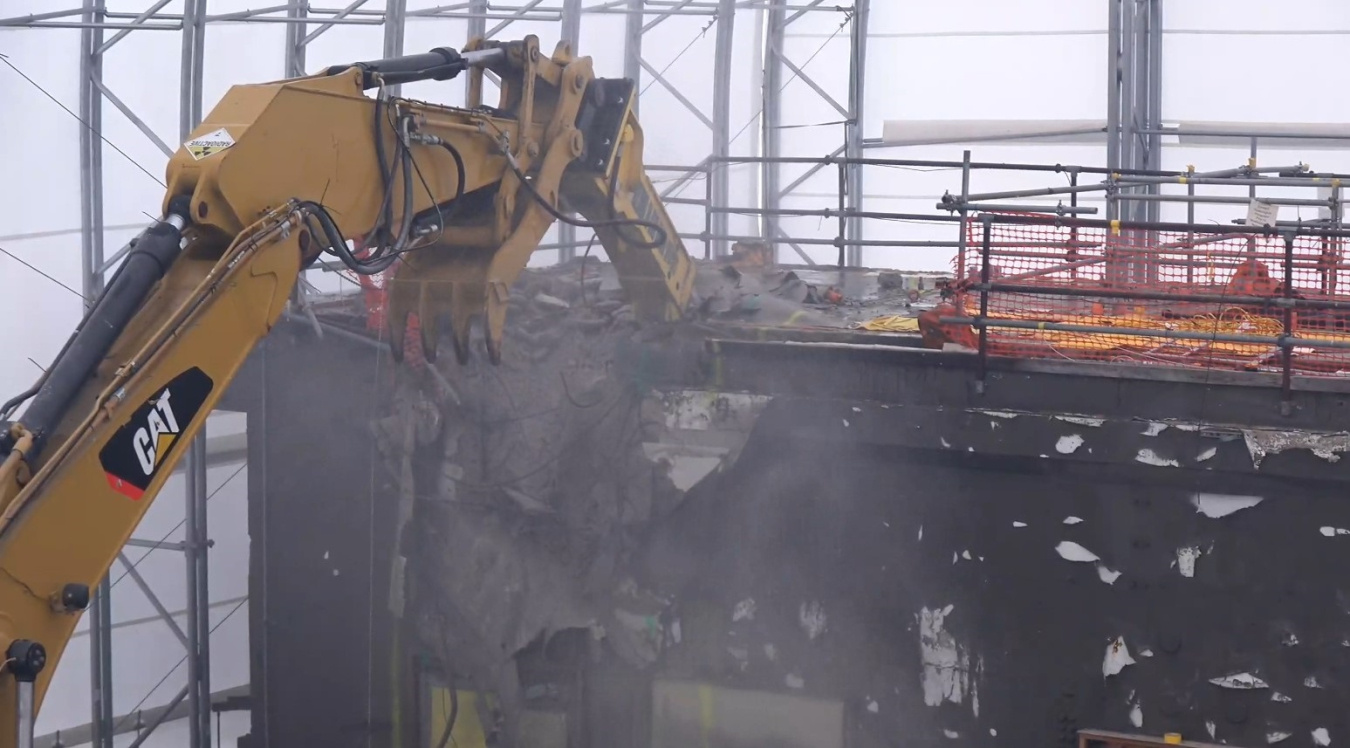Oak Ridge Office of Environmental Management contractor UCOR is testing new remote equipment that will help workers avoid some of the most challenging, contaminated environments during upcoming deactivation and demolition projects at ORNL. August 19, 2025
Office of Environmental Management
August 19, 2025A worker demonstrates a robotic device that will support deactivation and demolition efforts on the last remaining hot cell structure of the former Radioisotope Development Laboratory at Oak Ridge National Laboratory.
OAK RIDGE, Tenn. — Oak Ridge Office of Environmental Management contractor UCOR is testing new remote equipment that will help workers avoid some of the most challenging, contaminated environments during upcoming deactivation and demolition (D&D) projects at Oak Ridge National Laboratory (ORNL).
Over the past year, employees have tested the remote demolition unit, performing initial demonstrations at the Experimental Gas-Cooled Reactor. The device allows workers to significantly increase their distance from potential hazards, reduce exposure and make the work safer.
“The great thing about remote demo equipment is the focus on safety for the team by keeping them out the hazard area,” said Scott Ward, UCOR cleanup and D&D engineering manager. “This style of deactivation and demolition is critical for the future of cleanup in Oak Ridge.”
The final remaining hot cell of the former Radioisotope Development Laboratory is divided into subcells A and B. Crews achieved a U.S. Department of Energy Office of Environmental Management priority by beginning demolition of subcell B earlier this year. Next, workers will use this remotely operated equipment to assist with deactivating subcell A.
Workers have already conducted mock-ups with the robotic system to prepare to support upcoming deactivation and removal activities at the former Radioisotope Development Laboratory. Those activities are scheduled to begin later this year to help remove the final portion of the Manhattan Project-era building.
Crews demolished the facility’s outer structure and five of the six hot cells in the former laboratory, known as Building 3026, in previous years.
The cells were heavily shielded concrete rooms that provided researchers protection from radioactive material as they conducted research. The laboratory was built in 1945 to support isotope separation and packaging and was later used to examine irradiated reactor fuel experiments and components.
The final hot cell is divided into subcells A and B. Crews achieved a U.S. Department of Energy Office of Environmental Management priority by beginning demolition of subcell B earlier this year. Next, workers will use this remotely operated equipment to assist with deactivating subcell A due to the high radioactivity there. Demolition is scheduled for completion next year.
Remote deactivation is essential because the last remaining hot cell is one of the most contaminated structures at ORNL.
Workers will use the robotic system to reduce the size of contaminated items in the cell, load them into containers and ready the debris for final packaging and disposal. The team will also use the remote equipment to remove a contaminated stainless steel liner in the hot cell prior to demolition.
There are also other opportunities on the horizon to use remote equipment to aid the deactivation of other highly contaminated facilities at ORNL, including the former Fission Production Development Lab, known as Building 3517.
-Contributor: Carol Hendrycks
To receive the latest news and updates about the Office of Environmental Management, submit your e-mail address.



